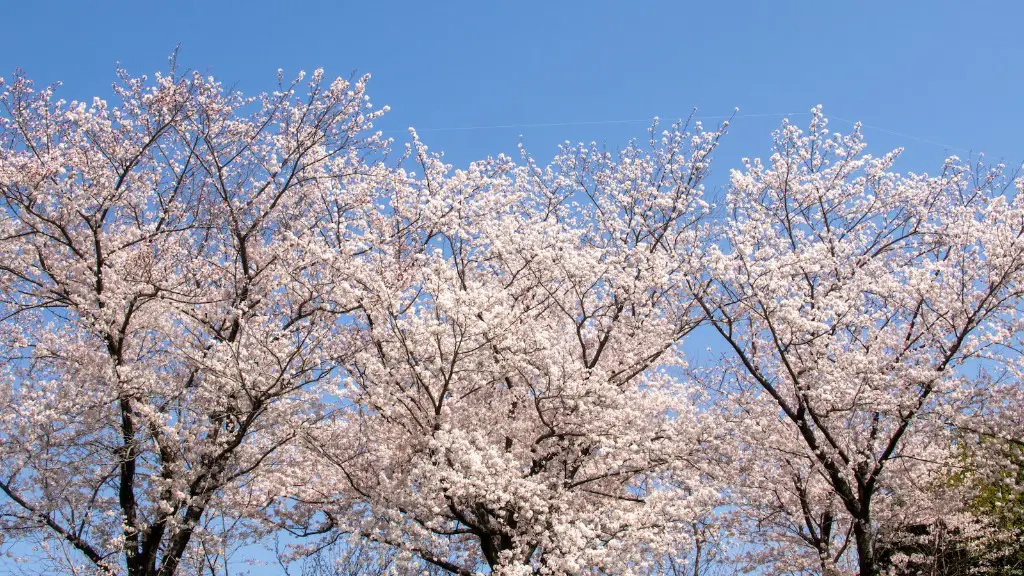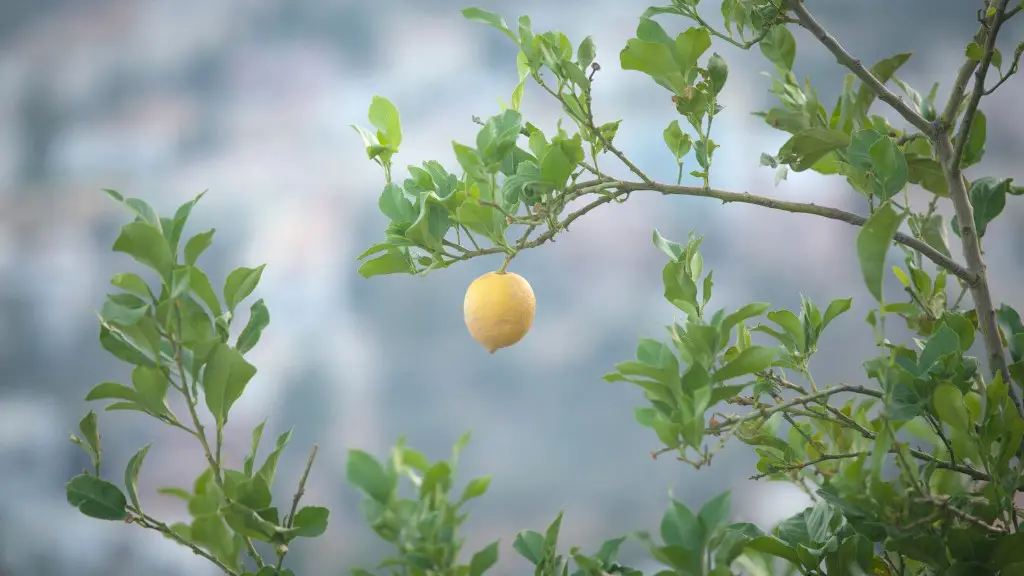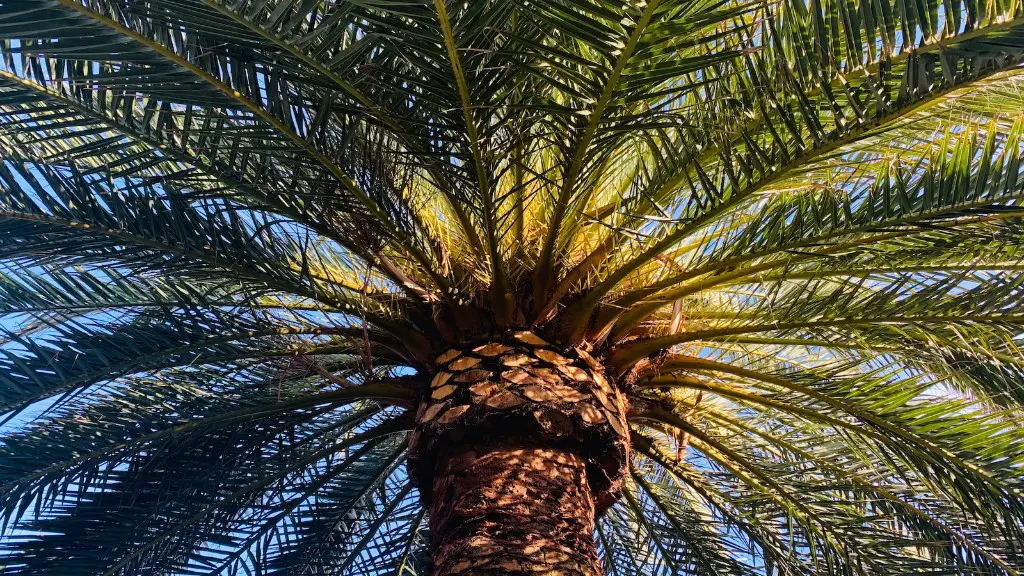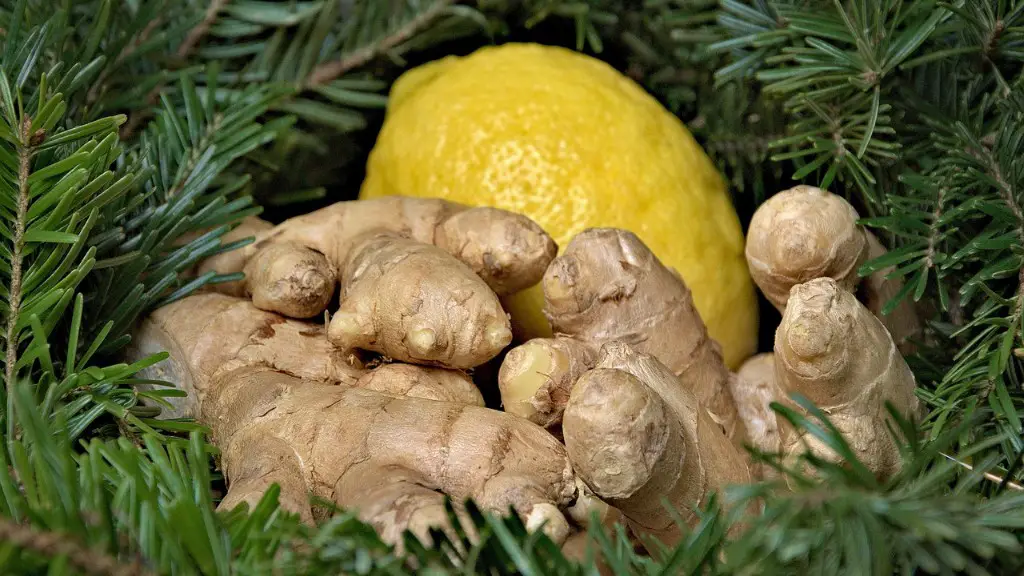Cherry trees are a popular addition to many yards and gardens, and they come with a great deal of curiosity. Decorative and tasty, cherry trees are vesatile and can be grown in many climates with just a few considerations. But what type of tree is it? Is it a flowering plant?
The answer to this question is YES. Cherry trees are a type of flowering plant that are highly varied in size, shape, and foliage color. Generally there are two main categories of cherry tree – the sweet cherry, and the sour cherry. Sweet cherries are commonly the ones grown for snacks and used in baking, and sour cherries are typically used for cooking and canning.
Planting and growing cherry trees depends on the variety, but there are a few general rules that apply to most. Cherry trees need to be planted in soil that is deep and well-drained, and they need a spot that gets ample sunlight. This can vary depending on the region since some cherries are more heat tolerant or cold hardy than others. The soil should also be slightly acidic and rich in nutrients, so it’s important to check the pH of the soil before planting cherries.
Caring for cherry trees is relatively simple, but it’s important to be diligent. Watering deeply and regularly is key, as this helps to keep the soil moist and provide the necessary oxygen to the roots and leaves. Fertilizing the cherry tree every spring is important to keep the soil healthy and provide it with the necessary nutrients, and pruning should be done once or twice a year to maintain the shape and health of the tree.
The blooming period for cherry trees can vary depending on the climate, but most of them tend to bloom in early spring and the flowers are pink or white, depending on the variety. The flowers are often very fragrant and attract bees and other pollinators, which is beneficial to the tree’s health and future yields.
The final result of a flowering cherry tree are their cherry fruit, which is usually what most people are interested in. Spineless, sour, sweet, and white cherries all have different characteristics, shapes, and sizes, and can be eaten fresh, canned, or dried for a variety of recipes.
Benefits of Cherry Trees
The benefits of owning a cherry tree can not be overstated. Not only are they beautiful to look at and produce delicious fruits, but they can also provide a variety of environmental benefits. By attracting pollinators such as bees, birds and butterflies, cherry trees can help to improve the overall health of a garden or landscape by boosting pollination of other plants as well.
Cherry trees also provide food for local wildlife such as birds and small mammals. Additionally, the shade created by a large cherry tree is beneficial to growing vegetables and other plants underneath it, as it reduces the amount of direct sunlight they need to survive. Finally, their fragrant flowers make them a perfect addition to any garden or yard, creating a pleasant and inviting atmosphere.
Harvesting Cherry Trees
The best time to harvest cherry trees is after the tree has had a full growing season, which can range from late summer to late fall, depending on the variety and climate. During the summer, it’s a good idea to check the cherries for signs of ripeness, such as color, size, and firmness. If the cherry is ripe, it should easily come off the tree with a gentle twist. Otherwise, it should be left on the tree to continue ripening.
After harvesting, cherry trees should be stored carefully and in an airtight container. Cherries are highly perishable and will spoil quickly if not stored properly. They can also be frozen for up to several months, which is a great way to preserve them for later use.
Pests Affecting Cherry Trees
Pests can be a major concern for any gardener or orchardist, and cherries are no exception. Cherry trees can be affected by a variety of pests, including beetles, moth larvae, aphids, spider mites, and Japanese beetles, just to name a few. Identifying these pests early and taking appropriate preventative measures is key to avoiding hefty crop losses.
The best way to protect cherry trees from pests is with preventative approaches such as planting native plants that attract beneficial insects, and using insecticidal soaps and horticultural oils. Other solutions include hand picking insects off the tree and using row covers to prevent pests from laying eggs on the tree. It’s also important to keep the tree well-watered and adequately fertilized, as this helps to keep it healthy and minimizes the risk of pests.
Diseases Affecting Cherry Trees
In addition to pests, cherry trees can be affected by several diseases as well. Common disease to look out for include powdery mildew, brown rot, leaf spots, cherry leaf spot, and bacterial canker. These can be caused by environmental factors such as too much moisture, not enough water, or inadequate nutrition. It’s important to identify the signs of disease quickly so that corrective measures can be taken to prevent significant damage to the tree.
The best way to prevent diseases from affecting a cherry tree is to make sure it is properly cared for and maintained. Proper watering and fertilization, as well as pruning and removing dead or dying branches, helps to keep the tree healthy and strong and reduces the risk of it being susceptible to diseases. Additionally, regular monitoring of the tree is important and any signs of disease should be reported to a certified arborist or tree specialist as soon as possible.
Common Varieties of Cherry Trees
There is a wide range of cherry tree varieties, each with its own unique characteristics and growing requirements. Some of the most common types of cherry trees include sour cherries, Rainer cherries, Bing cherries, Montmorency cherries, and Royal Ann cherries. All of these varieties have slightly different fruits, bloom times, and growing conditions.
When selecting a cherry tree for a yard or garden, it’s important to consider the local climate and the type of soil available. The ideal cherry tree for one area may not necessarily be the best option for another. Talking to a local nurser or extension office can provide valuable insight as to which type of cherry tree is best suited for a particular region or area.
Cherry Trees and Climate Change
The effects of climate change can be seen in many areas, from ocean levels rising to increased temperatures. This can affect many different types of plants, including cherry trees. With the changing climate, cherry trees may experience shorter blooming periods, more severe frost and heat, and changes in pest and disease pressures. Due to this, it is important for growers and gardeners to understand how climate change is affecting their cherry trees and to take the necessary steps to minimize any potential damage.
The best way to do this is to practice sustainable gardening. This includes minimizing pesticide and fertilizer use, planting native varieties of trees that are adapted to the environment, and using mulch or cover crops to help regulate soil temperature. Additionally, using irrigation systems to help water the trees and protect them from excessive heat or drought can also be beneficial.
Uses of Cherry Trees
Cherry trees are useful as both a decorative plant and as a delicious source of food. With their fragrant flowers and tasty fruit, they can be a great addition to any yard or garden. In addition to being a source of food, cherry trees are used in a variety of ways, such as windbreaks, privacy screens, shade trees, and for medicinal purposes.
The wood of cherry trees is also a valuable resource and can be used to make furniture, musical instruments, and even charcoal. Charcoal is a important component of many products such as gunpowder, cosmetics, and soap. Finally, cherry trees also provide a valuable source of nectar for bees, which has a direct influence on honey production.





